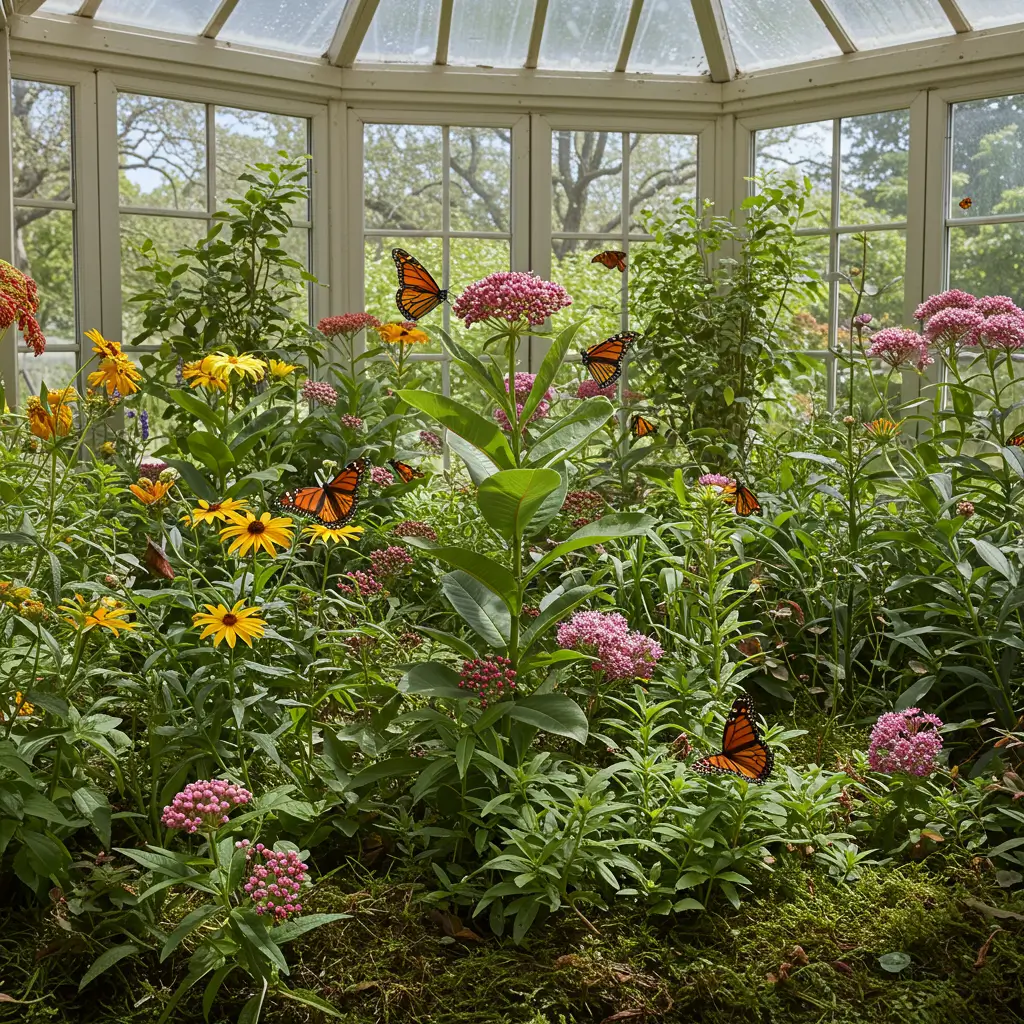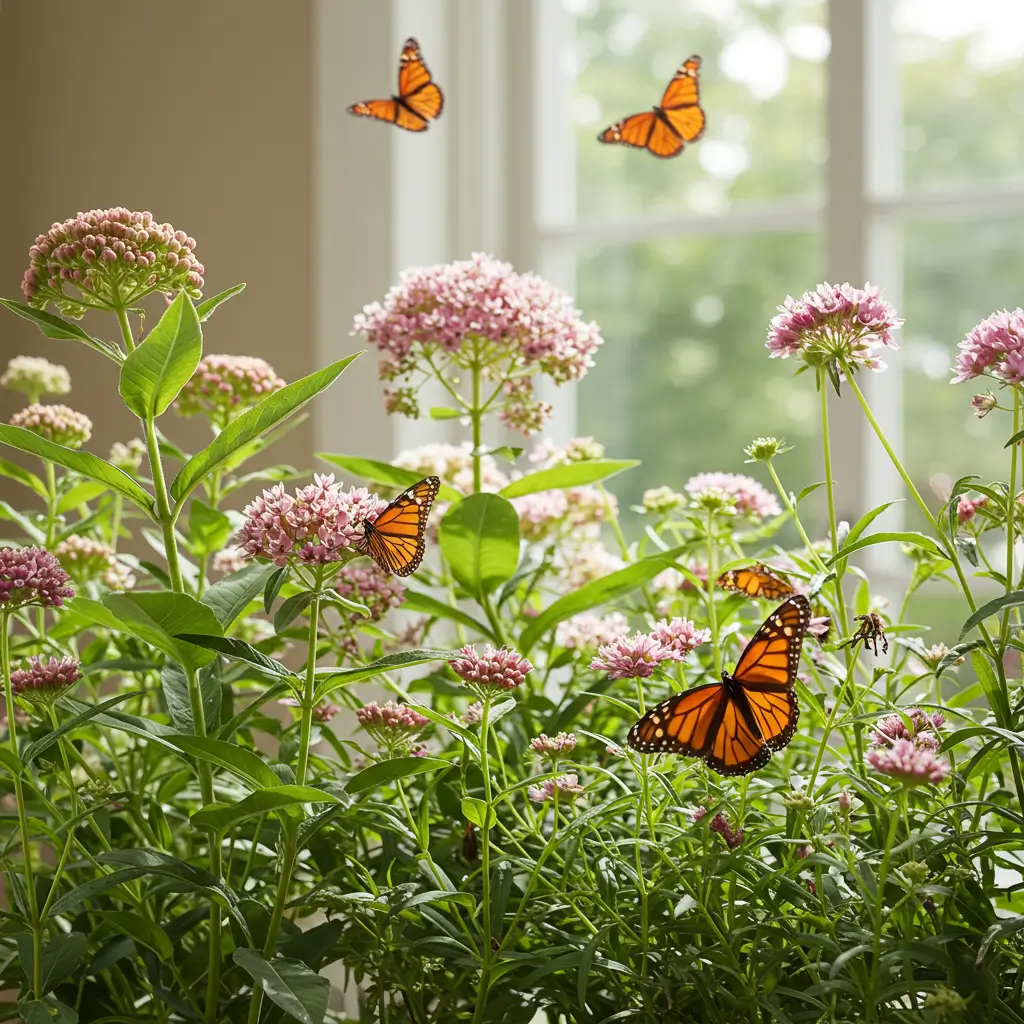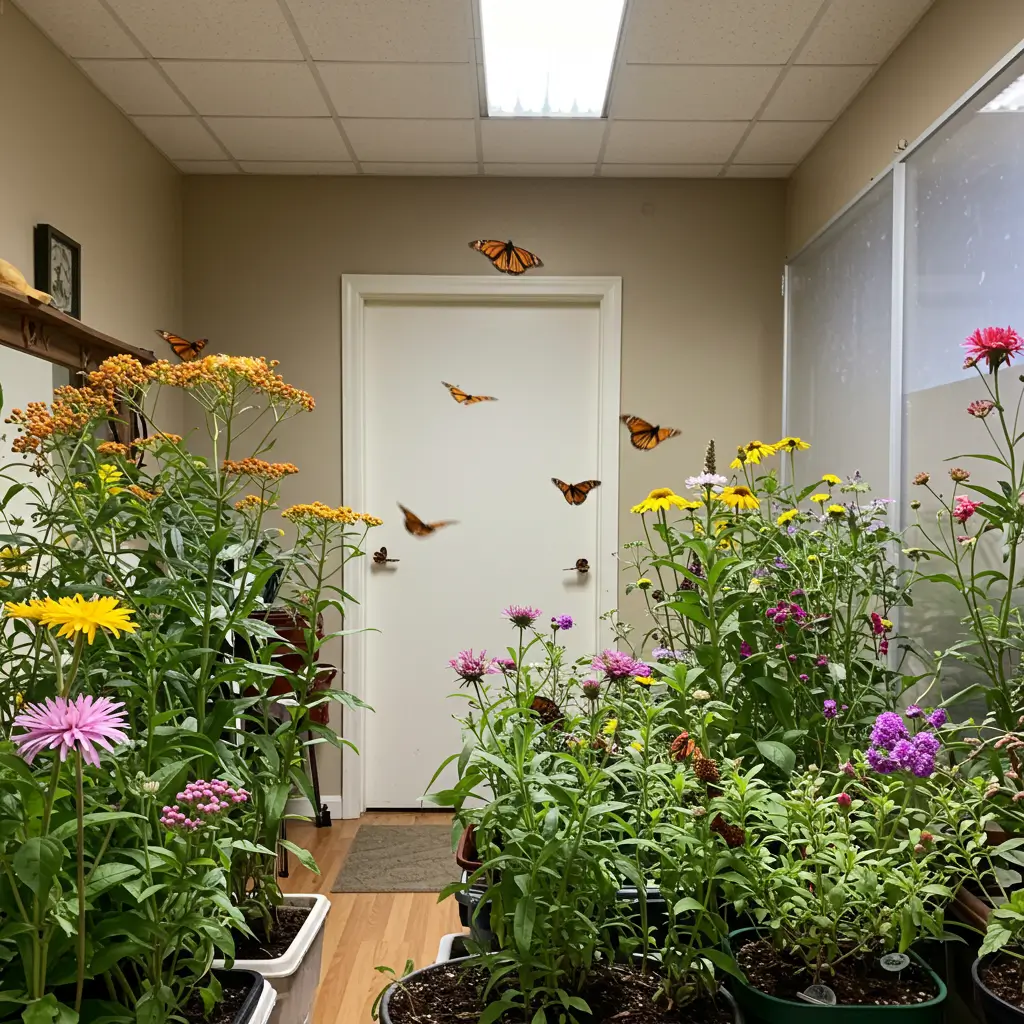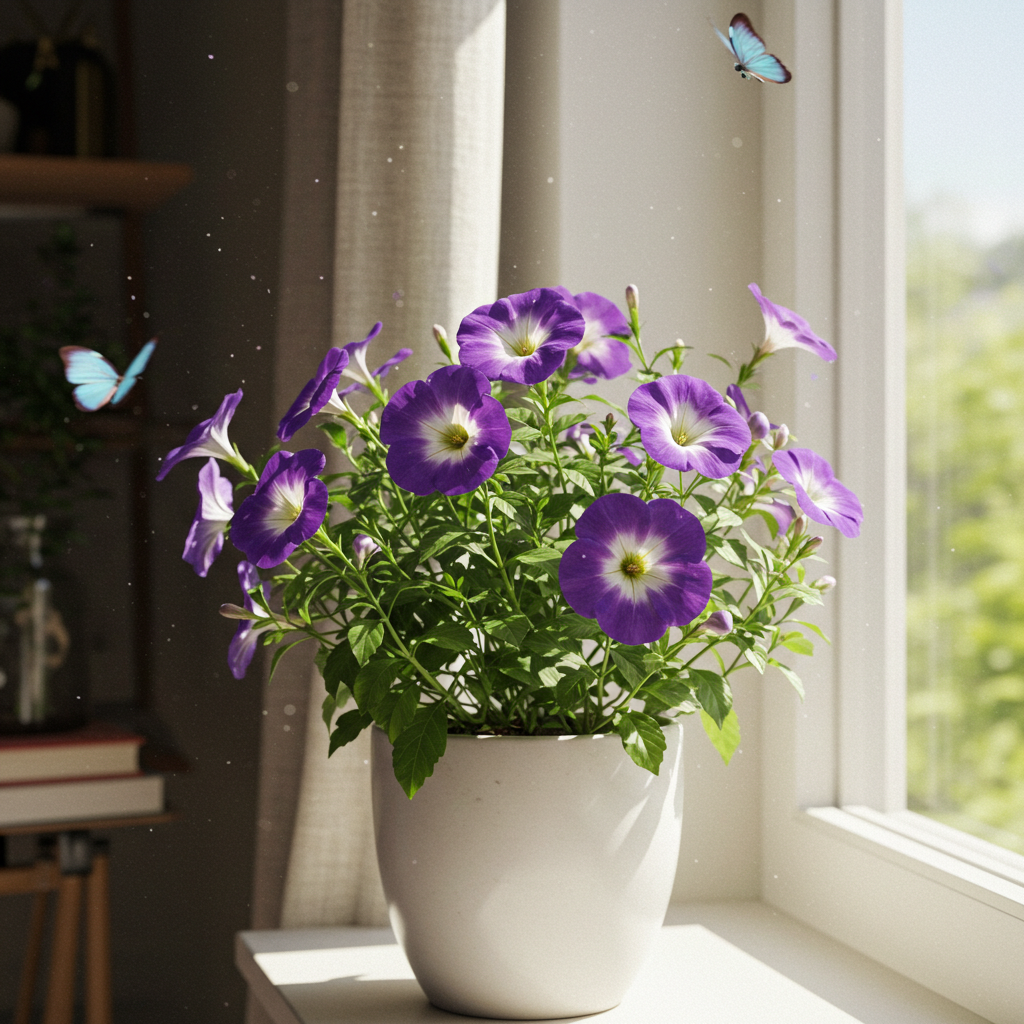Butterfly plants, particularly Asclepias (commonly known as milkweed), are not only beautiful but also play a crucial role in supporting pollinators like monarch butterflies. Growing these plants indoors can be a rewarding experience, whether you’re an avid gardener or a beginner. In this guide, we’ll cover everything you need to know about butterfly plant care indoors, from choosing the right plants to troubleshooting common problems.
Why Grow Butterfly Plants Indoors?
Benefits of Growing Butterfly Plants Indoors
Butterfly plants are more than just pretty additions to your home. They help purify the air, add a touch of nature to your living space, and create a calming environment. Plus, they’re a great way to support pollinators, even if you don’t have an outdoor garden.
How Butterfly Plants Help Monarch Butterflies
Monarch butterflies rely on milkweed plants as their primary host for laying eggs and feeding their caterpillars. By growing butterfly plants indoors, you’re contributing to the conservation of these beautiful creatures, especially in urban areas where natural habitats are limited.
Perfect for Small Spaces
If you live in an apartment or have limited outdoor space, growing butterfly plants indoors is a fantastic solution. They thrive in pots and can be placed on windowsills, balconies, or shelves, making them ideal for urban dwellers.
Choosing the Right Butterfly Plants for Indoor Care
Best Varieties of Asclepias for Indoor Growing
Not all butterfly plants are suited for indoor growing. The Asclepias curassavica (tropical milkweed) is one of the best varieties for butterfly plant care indoors because of its compact size and vibrant flowers. Other options include Asclepias tuberosa (butterfly weed) and Asclepias incarnata (swamp milkweed), though these may require more space.
Understanding the Needs of Butterfly Plants
Before bringing a butterfly plant indoors, it’s essential to understand its basic needs:
- Light: Bright, indirect sunlight is ideal.
- Water: Consistent moisture without overwatering.
- Soil: Well-draining soil with organic matter.
Where to Buy Healthy Butterfly Plants for Indoors
You can find butterfly plants at local nurseries, garden centers, or online stores. Look for healthy plants with no signs of pests or diseases. If you’re starting from seeds, ensure they’re from a reputable source.
Read More :
Essential Tips for Indoor Butterfly Plant Care
Light Requirements for Indoor Butterfly Plants
Butterfly plants need plenty of light to thrive. Place them near a south or west-facing window where they can receive at least 6 hours of bright, indirect sunlight daily. If natural light is insufficient, consider using grow lights to supplement.
Watering Indoor Butterfly Plants: Dos and Don’ts
Overwatering is one of the most common mistakes in butterfly plant care indoors. These plants prefer moist but not soggy soil. Water them when the top inch of soil feels dry, and ensure the pot has proper drainage to prevent root rot.
Soil and Fertilizer for Healthy Indoor Butterfly Plants
Use a well-draining potting mix with added perlite or sand to improve drainage. Butterfly plants don’t require heavy fertilization, but you can use a balanced, water-soluble fertilizer once a month during the growing season (spring and summer).
Pruning and Maintaining Butterfly Plants Indoors
Regular pruning helps maintain the shape of your butterfly plants and encourages new growth. Remove dead or yellowing leaves and trim back leggy stems. This also helps prevent pests and diseases.
Common Challenges in Indoor Butterfly Plant Care
Dealing with Pests on Indoor Butterfly Plants
Indoor butterfly plants can attract pests like aphids and spider mites. To manage these:
- Spray the plant with a mixture of water and mild soap.
- Introduce beneficial insects like ladybugs (if feasible).
- Wipe leaves regularly to remove dust and pests.
Preventing Diseases in Indoor Butterfly Plants
Overwatering can lead to root rot and fungal issues. Ensure proper drainage and avoid letting water sit in the saucer. If you notice mold or mildew, reduce humidity and improve air circulation around the plant.
Troubleshooting Common Indoor Butterfly Plant Problems
- Yellow Leaves: Could indicate overwatering or poor drainage.
- Wilting: Often a sign of underwatering or insufficient light.
- Slow Growth: May require more light or a nutrient boost.
Tips for Attracting Pollinators Indoors
Creating a Pollinator-Friendly Indoor Space
While it’s challenging to attract monarch butterflies indoors, you can create a pollinator-friendly environment by placing your butterfly plants near open windows or on balconies. This increases the chances of attracting bees and other small pollinators.
Pairing Butterfly Plants with Other Pollinator-Friendly Plants
Combine your butterfly plants with other indoor pollinator favorites like lavender, rosemary, or geraniums. This creates a diverse and attractive environment for beneficial insects.
How to Encourage Monarch Butterflies Indoors
If you’re passionate about monarchs, consider creating a small indoor habitat with a mesh enclosure. Place your butterfly plants inside and provide a water source. While this requires effort, it’s a rewarding way to support these endangered butterflies.
Conclusion
Growing butterfly plants indoors is a fulfilling way to bring nature into your home while supporting pollinators like monarch butterflies. By following this guide on butterfly plant care indoors, you’ll be well-equipped to nurture healthy, thriving plants. Whether you’re a seasoned gardener or a beginner, these tips will help you create a beautiful and eco-friendly indoor garden.
Ready to start your indoor butterfly garden? Share your progress and photos with us—we’d love to see your success!
FAQs About Butterfly Plant Care Indoors
1. Can butterfly plants survive indoors?
Yes, butterfly plants can thrive indoors if provided with the right conditions. They need bright, indirect light, well-draining soil, and consistent moisture. Varieties like Asclepias curassavica (tropical milkweed) are particularly well-suited for indoor growing.
2. How often should I water my indoor butterfly plants?
Water your butterfly plants when the top inch of soil feels dry. Overwatering can lead to root rot, so ensure the pot has proper drainage. In general, watering once a week is sufficient, but this may vary depending on the humidity and temperature of your home.
3. Do butterfly plants need direct sunlight?
Butterfly plants prefer bright, indirect sunlight. Place them near a south or west-facing window where they can receive at least 6 hours of light daily. If natural light is limited, consider using grow lights to supplement.
4. What type of soil is best for indoor butterfly plants?
Use a well-draining potting mix with added perlite or sand to improve drainage. Butterfly plants don’t like soggy soil, so avoid heavy, water-retentive mixes.
5. How do I prevent pests on my indoor butterfly plants?
Common pests like aphids and spider mites can be managed by:
- Spraying the plant with a mixture of water and mild soap.
- Wiping the leaves regularly to remove dust and pests.
- Ensuring proper air circulation around the plant.
6. Can I grow butterfly plants from seeds indoors?
Yes, you can grow butterfly plants from seeds indoors. Start by planting the seeds in a seed-starting mix, keeping the soil moist but not soggy. Place the container in a warm, bright spot, and germination should occur within 7-14 days.
7. Why are the leaves on my butterfly plant turning yellow?
Yellow leaves can be a sign of overwatering, poor drainage, or nutrient deficiency. Check the soil moisture and ensure the pot has proper drainage. If the problem persists, consider fertilizing with a balanced, water-soluble fertilizer.
8. How do I attract pollinators to my indoor butterfly plants?
While it’s challenging to attract monarch butterflies indoors, you can create a pollinator-friendly environment by placing your plants near open windows or on balconies. Pairing butterfly plants with other pollinator-friendly plants like lavender or rosemary can also help.
9. Do butterfly plants need to be pruned?
Yes, regular pruning helps maintain the shape of your butterfly plants and encourages new growth. Remove dead or yellowing leaves and trim back leggy stems. Pruning also helps prevent pests and diseases.
10. Can I grow butterfly plants indoors year-round?
Yes, butterfly plants can be grown indoors year-round if provided with the right conditions. However, they may go dormant in the winter. Reduce watering during this period and resume regular care in the spring when new growth appears.

